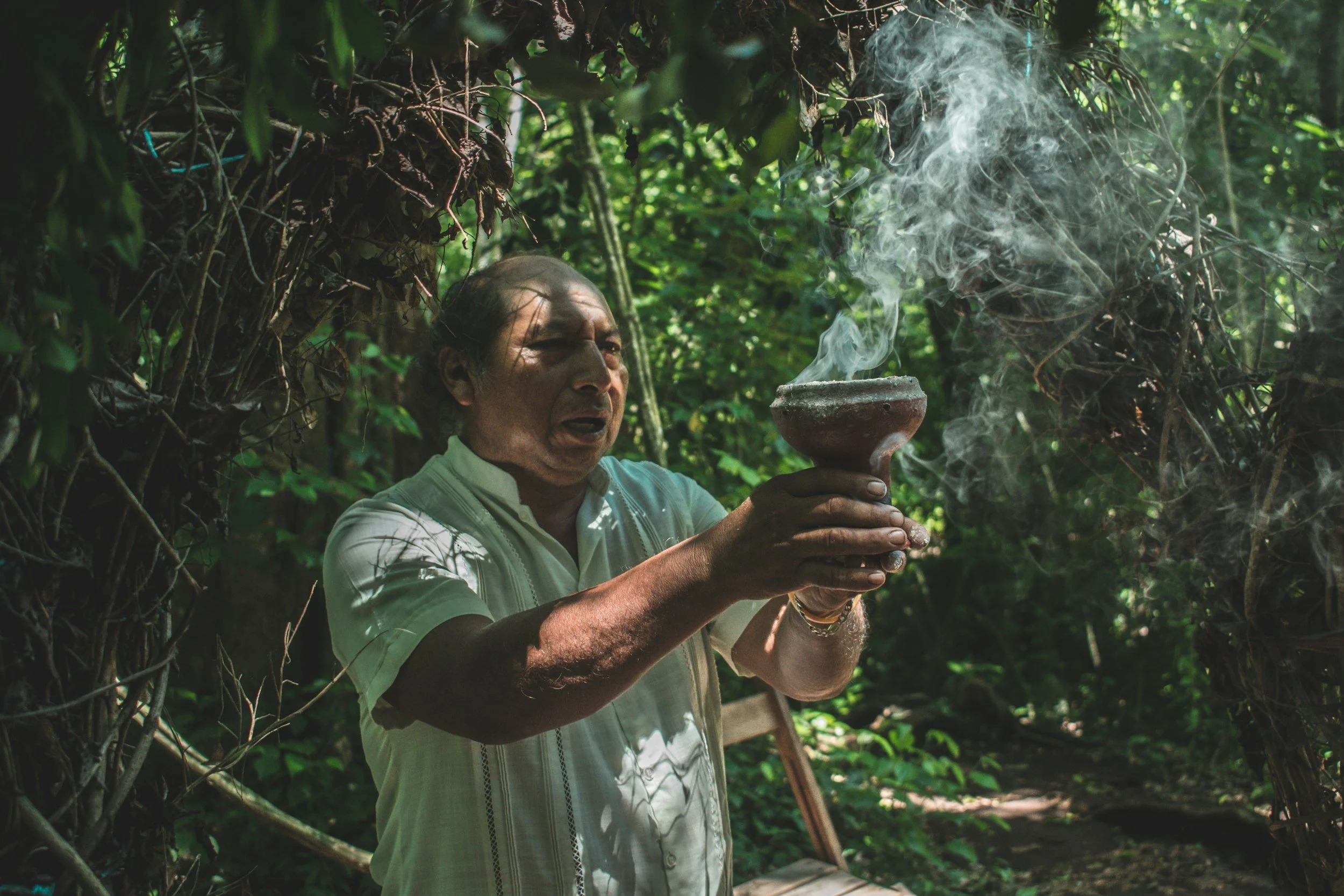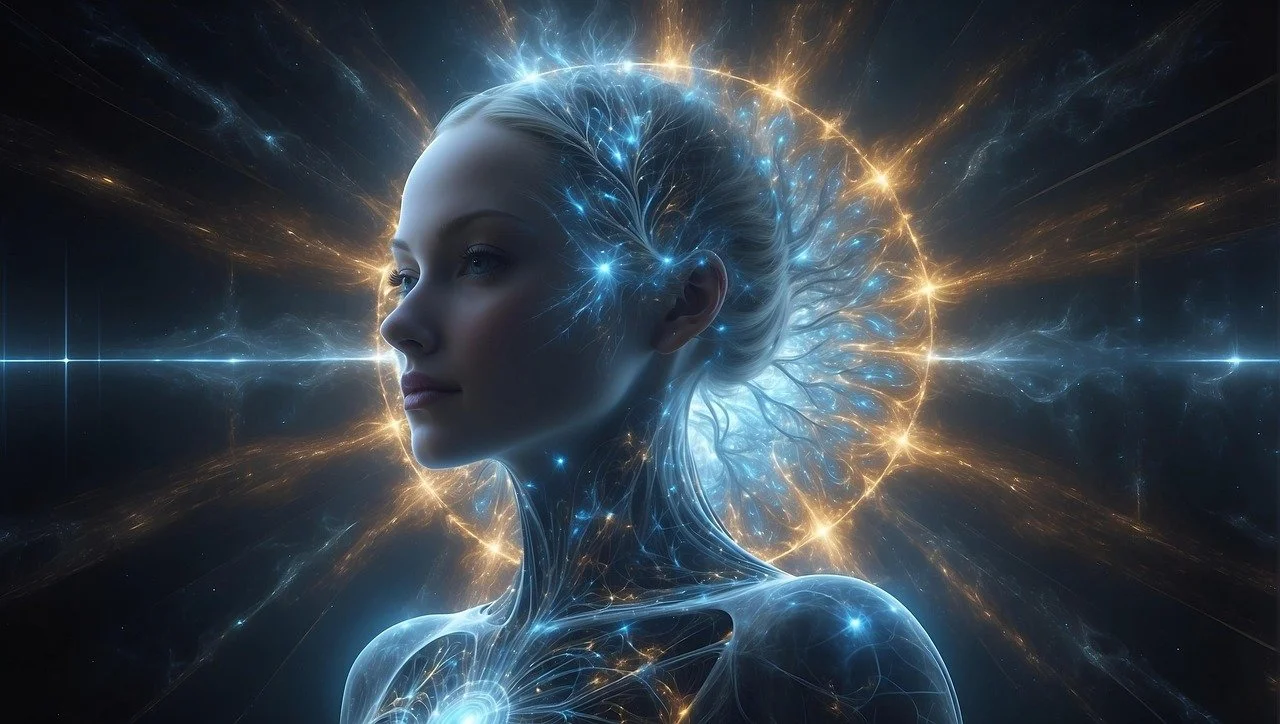Psychedelic Mystical Experiences
Written by Kirsti Formoso, MSc. Transpersonal Psychology, BSc. Psychology
Psychedelics have been hitting the headlines a lot in the last few years, and for a good reason.
Research shows that psychedelic-assisted psychotherapy is proving to be an optimal treatment for many treatment-resistant psychological problems like tobacco addiction, major depressive disorder, and PTSD. Now, if you’re like me and dabbled around with LSD when you were young, you might wonder how on earth taking psychedelics can help people overcome addictions.
What the headlines aren’t shouting about is the nexus of psychedelic-assisted therapy, the mystical experience. So, what is a mystical experience? And what’s it got to do with psychedelic experiences?
PSYCHEDELICS AND SPIRITUALITY
Psychedelic drugs and spirituality have a long history. There’s evidence of psychedelics being used for ritualistic, religious and spiritual purposes since time began. But more recently, in the 1960s, with a growing interest in psychedelics and their potential, people in the West started to notice that some psychedelic experiences seemed to resemble the mystical state. In 1962, Walter Pahnke set out to see if mystical-type experiences could be engendered using psychoactive substances. His now infamous PhD study, The Good Friday Experiment, did indeed show that mystical experiences could be brought about using psychedelics.
PSYCHEDELIC MYSTICAL EXPERIENCES
Psychedelic induced mystical experiences are profound states of consciousness that occur under the influence of certain substances, such as psilocybin, LSD, ibogaine and DMT. These experiences can mimic or even induce states of deep spiritual or mystical insight, sometimes resulting in the feeling of oneness with the universe, dissolution of the ego, or direct encounters with the divine.
During these experiences, individuals often report a sense of interconnectedness with all things, a transcendence of time and space, and a deep knowing of life's fundamental truths or ultimate reality. The boundaries between the self and the external world may blur or completely dissolve, leading to what is commonly described as ego death or ego dissolution, where the individual feels as though they are no longer a separate entity but part of a greater, unified whole. These mystical-type experiences are often accompanied by intense feelings of awe, wonder, and bliss, as well as a sense of profound spiritual significance.
CHALLENGES OF PSYCHEDELIC MYSTICAL EXPERIENCES
Eliciting mystical experiences through psychedelic drugs is not for the faint-hearted. Even in clinical trials, people have been known to struggle with the subjective effects of psychedelic drugs, which can occasionally have negative side effects and consequences. An acute psychedelic experience such as DMT might only last a few minutes, but they are powerful and intense. The ego dissolution or ego-death of such experiences can cause anxiety, confusion and stress.
MEASURING PSYCHEDELIC MYSTICAL EXPERIENCES
How significant or meaningful an experience is in someone’s life is related to how profound the mystical state is felt. When researching psychedelic-induced mystical-type experiences, participants are asked to fill out mystical experience questionnaires. This enables researchers to determine how strongly the mystical state is felt. More profound and enlightening experiences score higher on the mystical experience questionnaire and are called complete mystical experiences. These are more likely to be thought of as more meaningful, significant and healing.
PSYCHEDELIC SET AND SETTING
So why isn’t everyone experiencing this very special type of altered state of consciousness every time they have a psychedelic experience? Psychedelics are mind-altering. You will have an altered state of consciousness, but you won’t necessarily have a mystical type experience. In fact, I think they’re probably quite rare in a recreational context. However, the researchers at John Hopkins Centre for Psychedelic Research seem to bring about a mystical experience in most of their participants. How do they do this?
They use something called set and setting. This means that the set, or in other words, the mindset of the person taking the psychoactive substance, is prepared beforehand. They’re primed to have a mystical-type experience. Expectation plays a large part. They’re also in a good mindset going into the experience. They feel safe and secure. They trust their sitters and supporters.
Setting refers to the context and environment of the experience. At John Hopkins, a lot of attention has been put into getting the environment just right. Rather than looking like a research lab or clinician’s office, the environment they’ve created is more homely and relaxing. Everything is set up to support and encourage the mystical to occur.
Set and setting can’t be underestimated. The participants at Johns Hopkins report more mystical-type experiences than at London Imperial College, where they also conduct psychedelic studies and clinical trials. However, at Johns Hopkins, the intention is for this special type of spiritual experience to occur. The therapeutic effects rely on the mystical experience. In contrast, at London Imperial College, the researchers weren’t interested in mystical experiences, and as a result, their participants reported less of them.
BENEFITS OF PSYCHEDELIC MYSTICAL EXPERIENCES
Research in recent years has increasingly explored the subjective effects of psychedelics and their therapeutic potential, particularly in relation to mental health conditions like treatment-resistant depression, anxiety, and post-traumatic stress disorder (PTSD). One of the first studies investigating the therapeutic potential of psychedelic therapy showed that terminally ill people experiencing an existential crisis were no longer afraid of dying. And more recent research at John Hopkins has been investigating the use of psychedelics for people with anorexia, a psychological condition that is very difficult to treat using traditional methods.
The mystical aspect of these spiritual experiences is considered to be one of the most significant factors contributing to their positive outcomes, as it can lead to transformative insights, emotional breakthrough, and a sense of spiritual well-being. Many people report a lasting shift in their perception of reality, often experiencing a heightened sense of connection to nature, other people, or the universe itself after the experience. This can lead to long-term changes in attitudes, such as increased empathy, a sense of purpose, or a reevaluation of previously held beliefs.
The benefits and therapeutic effects of mystical experiences are not only felt by the participants but witnessed by their loved ones. And they are enduring. In follow-up studies, the positive effects have been shown to last months, if not years.
This spiritual experience plays a crucial role in the therapeutic potential of psychoactive substances. Research has consistently found that the intensity of a participant’s mystical experiences can predict its healing and transformational potential. In other words, a complete mystical experience would tend to be more healing and transformative than milder experiences.
INTEGRATING PSYCHEDELIC MYSTICAL EXPERIENCES
To experience the full potential of psychedelic mystical experiences, integration is necessary. This involves actively working with your experience long after the psychoactive substances have left your body. Research has found that journaling and meditation can be very powerful. I guess the more we reflect on and re-visit our experiences, the more we bring that state of consciousness into our everyday lives.
Psychedelic science and research into the therapeutic effects of psychedelic mystical experiences is thriving. While this is exciting, I’d like to see future research and clinical studies efforts broaden the scope to discover alternative ways of reliably triggering a mystical experience that might be more available to more people.
Explore More About Mystical Experiences
Want to expand your knowledge and understanding? Check out these articles:





